Open a Logic representation. See
a typical example below.
This program is a simple counter.
In the initial step, the minimum,
maximum and increment value of the counter are defined.
At the second step, the minimum
value is affected at the counter value.
At the third step, the previous
value of the counter is incremented of the value
of Inc until the maximum value of the counter is
reached.
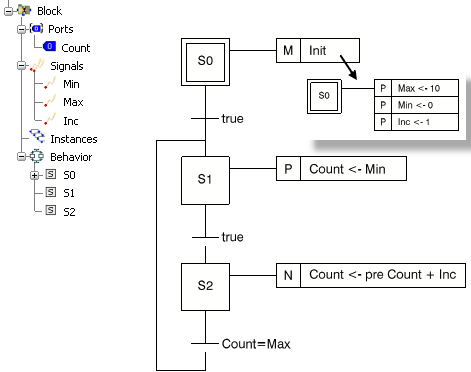
Click Debug
 and select the block you want to simulate in the specification
tree (Block in our example).
and select the block you want to simulate in the specification
tree (Block in our example).
The program is compiled and the simulation
toolbars and windows appear:
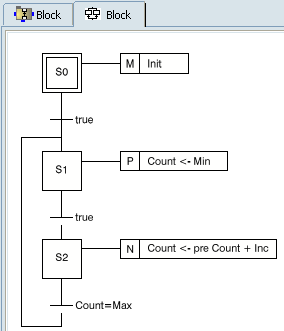
Note:
As no block behavior is defined, the tab  is empty.
is empty.
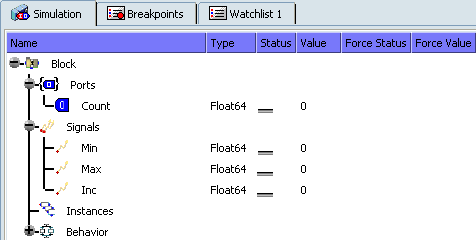
Double-click the Init macro in the Logics Monitoring window to review its content.
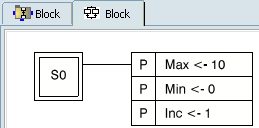
Right-click the Logics Monitoring window background and select Level Up.
The main graph replaces the macro.
Click Play Step Forward
in the Simulation Player toolbar.
As the transition between the first
two steps has no pause, the two steps are computed in
one cycle. The values of all the ports are assigned.
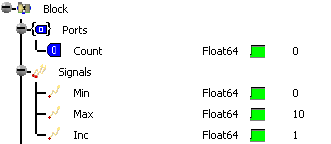
In the Logics Monitoring window, the blue items have been processed (actions) or evaluated (transitions) the previous cycle. A yellow arrow points the next active step.
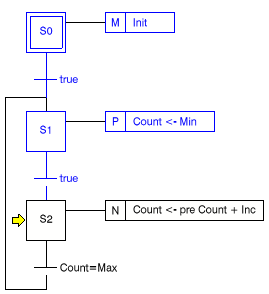
Click Play Step Forward
again in the Simulation Player toolbar. The
output Count is incremented.
Right-click the
Count row in the Signals
Monitoring window and select Insert 'Count'
to > WatchList 1.
Switch to the Watch List 1
tab, Count appears in the list.

In the column Force Value,
enter 10 and press Enter.

Click Play Step Forward
in the Simulation Player toolbar.
The condition Count=Max of the transition
is true, the next active step is S0.
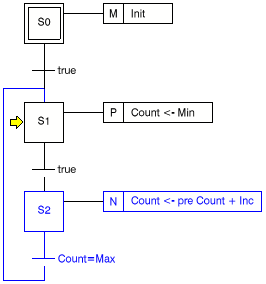
Click in the S1 step to add a breakpoint.
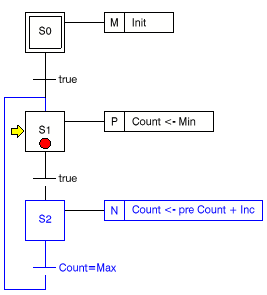
Select the Breakpoints tab in the Signals Monitoring window.

You can see that the step S1 is added to the tab.
Click the Watchlist 1 tab.
Click Play Forward.
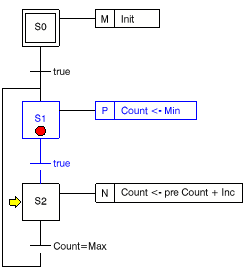
The simulation is paused after the execution of the step S1.
Click again the S1 step to remove the breakpoint.
Right-click the Count
row and select Plot 'Count'.
The Plot window appears.
The vertical axis is the value of the port, the horizontal
axis is the virtual time (a simulation step matches 100ms).
The axes are automatically redrawn to
fit the graph.
Zoom and Pan commands
are available in this window.
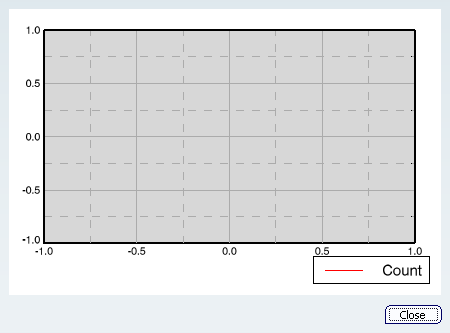
Click Play Step Forward
in the Simulation Player toolbar.
The simulation is run continuously.
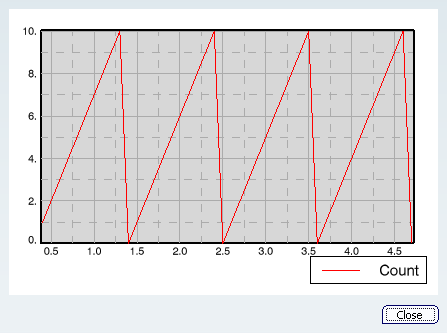
Click Pause in the
Simulation Player toolbar.
Click Debug to stop the
simulation.